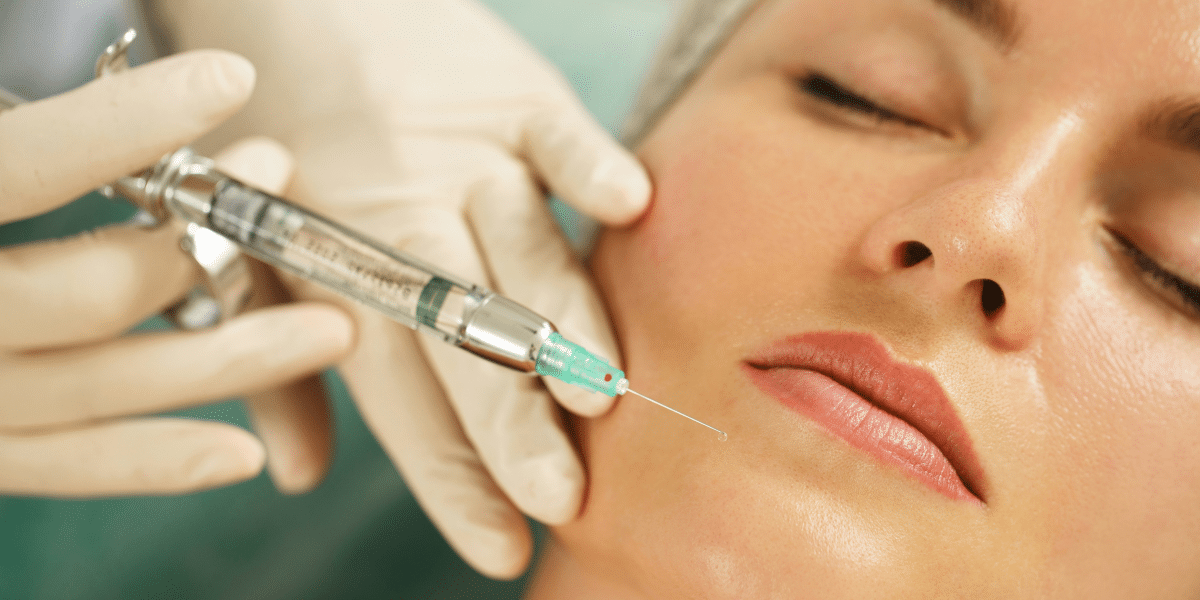In recent years, Botox has become one of the popular non-invasive cosmetic treatments worldwide. Whether used to reduce the appearance of fine lines and wrinkles or to treat medical conditions like migraines and excessive sweating, Botox has a range of applications that make it highly sought after. But how exactly does Botox work, and what should you expect if you’re considering the treatment for the first time? In this article, we will break down the science behind Botox, its various uses, and what you can expect before, during, and after your procedure.
What is Botox?
Botox is a brand name for botulinum toxin, a neurotoxic protein produced by the bacterium Clostridium botulinum. While botulinum toxin is well-known for causing botulism, a rare but serious form of food poisoning, when used in controlled amounts, it has many therapeutic benefits. The common use of Botox is in cosmetic medicine, where it’s injected into specific muscles to reduce their activity temporarily.
When a person frowns, smiles, or makes any facial expression, the muscles beneath the skin contract, which over time can lead to the development of dynamic wrinkles. Botox injections work by blocking the nerve signals to these muscles, causing them to relax and smooth out the skin. As a result, lines and wrinkles become less noticeable.
How Does Botox Work?
The key to understanding how Botox works lies in its mechanism of action at the neuromuscular junction—the point where nerve cells communicate with muscles. Normally, nerves release a chemical called acetylcholine at the neuromuscular junction, which binds to receptors on the muscle, signaling it to contract. Botox works by blocking the release of acetylcholine, preventing muscle contraction.
By inhibiting these muscle movements, Botox effectively softens or eliminates the appearance of wrinkles and fine lines in the treated areas. The effects are temporary, usually lasting between 3 to 6 months, after which the muscle activity gradually returns, and wrinkles may reappear. Regular maintenance treatments can prolong the smoothing effects.
Medical Applications of Botox
While Botox is commonly associated with cosmetic treatments, it has a wide range of medical applications as well. Here are a few notable conditions for which Botox is used:
Chronic Migraines: Botox is FDA-approved for the prevention of chronic migraines. It works by blocking the pain signals in the brain and preventing the activation of the pathways that lead to migraines. Patients typically receive multiple injections around the head and neck every 12 weeks.
Hyperhidrosis (Excessive Sweating): For individuals who suffer from severe underarm sweating or excessive sweating in other areas of the body, Botox can offer relief. It blocks the nerve signals that trigger sweat glands, thereby reducing sweating in the treated areas.
Overactive Bladder: Botox injections into the bladder can help relax the muscles that cause an overactive bladder, reducing urinary incontinence and urgency in patients who do not respond to other treatments.
Muscle Spasms and Tension: Botox can also be used to treat conditions like cervical dystonia (a painful condition where the neck muscles contract uncontrollably), spasticity caused by cerebral palsy or stroke, and other muscular disorders.
Cosmetic Applications of Botox
In addition to its medical uses, Botox is widely used in cosmetic treatments to reduce the appearance of wrinkles and fine lines. The common cosmetic applications include:
Forehead Lines: Horizontal lines that develop across the forehead as a result of raising the eyebrows can be softened with Botox.
Frown Lines (Glabellar Lines): The vertical lines between the eyebrows, often called “11” lines, can be reduced with Botox.
Crow’s Feet: These are the fine lines that form around the outer corners of the eyes, especially when smiling. Botox injections can minimize these lines.
Bunny Lines: Wrinkles that appear on the bridge of the nose when you scrunch your face can also be treated with Botox.
Lip Lines: Fine lines around the lips, sometimes called “smoker’s lines,” can be smoothed out with Botox.
The Botox Procedure: What to Expect
If you’re considering getting Botox for the first time, understanding the process can help ease any concerns. Here’s what you can expect before, during, and after a Botox treatment.
Before the Treatment
Before undergoing Botox, it’s essential to have a consultation with a qualified healthcare professional, such as a dermatologist or plastic surgeon. During this consultation, you’ll discuss your goals and the areas you’d like to target. The practitioner will evaluate your facial anatomy and determine how much Botox is required to achieve the desired results.
You may be asked to avoid certain medications and supplements that could increase the risk of bruising, such as aspirin, ibuprofen, or fish oil, for a few days before the procedure. Alcohol should also be avoided 24 hours before the treatment.
During the Treatment
A Botox session is relatively quick and usually takes about 10-30 minutes, depending on the number of areas being treated. The practitioner will use a fine needle to inject small amounts of Botox into specific muscles. You may feel a slight pinch, but people find the discomfort minimal. No anesthesia is required, although some practitioners may apply a topical numbing cream if you’re particularly sensitive.
One of the key benefits of Botox is that there is virtually no downtime. You can return to your normal activities immediately after the procedure, although you may be advised to avoid strenuous exercise, lying down, or rubbing the treated area for a few hours to prevent the Botox from spreading to unintended muscles.
After the Treatment
The effects of Botox are not immediate. It typically takes 3 to 7 days to start seeing the full results, with the maximum effect visible after about two weeks. Common side effects include mild swelling or bruising at the injection sites, but these generally resolve within a few days.
It’s important to follow your practitioner’s post-treatment instructions, which may include avoiding excessive sun exposure, saunas, or other activities that could interfere with Botox’s effectiveness. If you experience any unusual side effects, such as drooping eyelids or difficulty swallowing, contact your healthcare provider immediately.
How Long Does Botox Last?
The effects of Botox are temporary, typically lasting between 3 to 6 months. As the muscle activity gradually returns, lines and wrinkles may reappear, and a repeat treatment will be necessary to maintain the results. Some people may notice that the effects last longer with repeated treatments, as the targeted muscles may become accustomed to relaxing.
It’s essential to maintain a schedule with your provider if you want to sustain the results of your Botox treatment. Regular appointments every 3 to 4 months are often recommended, although the exact timing will depend on your body’s response to the treatment.
Risks and Side Effects
Like any medical procedure, Botox comes with some risks and potential side effects, though they are generally minimal when administered by a qualified professional. Common side effects include temporary bruising, swelling, and redness at the injection site. In rare cases, Botox can spread beyond the treated area, leading to unintended muscle weakness or drooping, such as a droopy eyelid (ptosis).
Other rare but serious side effects include difficulty breathing or swallowing if the Botox affects muscles in those areas. It’s crucial to seek treatment from a licensed and experienced provider to minimize the risk of complications.
Conclusion
Botox is a highly effective treatment for reducing the appearance of fine lines and wrinkles, and it also has a wide range of medical applications. Its ability to temporarily block nerve signals to muscles makes it an invaluable tool in both cosmetic and therapeutic fields. If you’re considering Botox, it’s essential to understand how it works and what to expect before, during, and after the procedure. With minimal downtime and quick results, Botox has become a go-to solution for those looking to enhance their appearance or alleviate medical conditions.
Disclaimer: This content is for informational purposes only and is not intended as medical advice, nor does it replace professional medical expertise or treatment. If you have any concerns or questions about your health, always consult with a physician or other healthcare professional.
Published by: Khy Talara



















